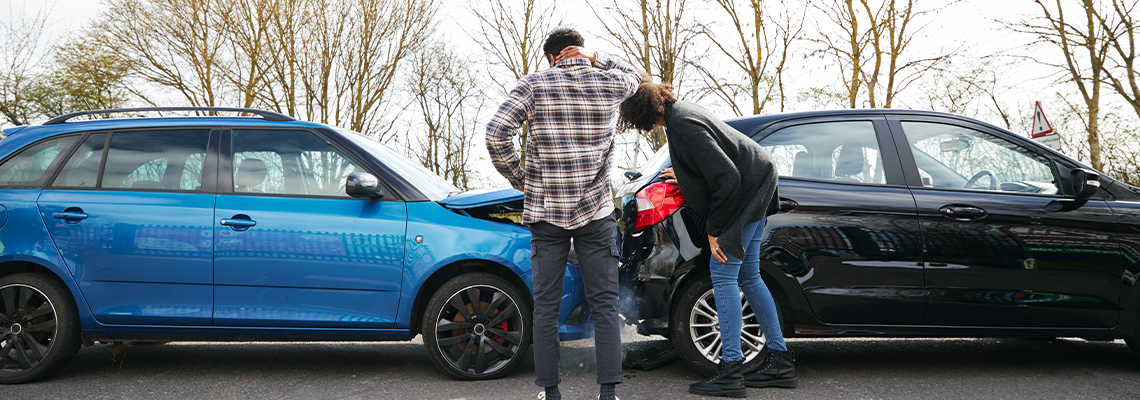Semi truck accidents, often involving large commercial vehicles like tractor-trailers, are among the most devastating incidents on Missouri’s roads. Due to their size, weight, and operational intricacy, these accidents frequently result in severe injuries, fatalities, and significant property damage.

Understanding Defective Product Liability
We rely heavily on material items in our daily lives. But what happens when a product turns out to be defective and leads to an accident, injury, or fatality? The consequences can be devastating. That's why it's crucial to understand product liability and the legal options available to seek compensation for any resulting damages.
At SJP Sifers Jensen Palmer, we know all too well the devastating impact of a defective product. It's not just about the physical injuries, but also the emotional trauma and financial burden that often follow. But you're not alone — we're here to guide you through the legal maze.
If you need legal help, contact our firm in Kansas City, Missouri, and schedule a free consultation. Our defective product attorneys will happily review your case and explain your legal options.
What Is Product Liability?
Product liability is the legal responsibility that manufacturers, distributors, and sellers bear for injuries or damages caused by defective products. If a product is defective and causes harm to a consumer, we have the right to take legal action to pursue financial compensation. It's a way of ensuring that those who make products available to the public are held accountable for their safety.
Types of Product Defects
As a consumer, you trust that the products you use are safe and reliable. But what happens when they're not? There are various types of defects that can lead to product liability claims. Here's what you need to know:
Design Defects
Imagine driving a car that has a tendency to flip over while turning corners. Terrifying, right? This is an example of a design defect, where the very blueprint of a product makes it inherently dangerous.
Similarly, sunglasses that fail to protect your eyes from harmful ultraviolet rays or an electric blanket that can electrocute you when turned on high, are examples of design defects.
Manufacturing Defects
Sometimes, a product's design is safe, but errors occur during its production. We call these manufacturing defects.
Consider a swing set with a cracked chain, or a batch of cough syrup accidentally mixed with a poisonous substance. Even a moped missing its brake pads falls into this category.
Marketing Defects (Failure to Warn or Instruct)
Ever bought a product that didn't come with adequate warnings or instructions? That's a marketing defect.
For instance, an electric tea kettle packaged without sufficient warnings about its oddly positioned steam valve, a cough syrup that doesn't warn about potential drug interactions, or a cleaning product sold without clear instructions for safe handling and use.
We understand how devastating it can be to suffer injuries or damages due to a defective product. At SJP Sifers Jensen Palmer, we're committed to helping victims hold manufacturers accountable for their negligence. If you or a loved one has been affected by a defective product, don't hesitate to reach out to us. Trust us, we've got your back.
Types of Product Liability Lawsuits
Product liability lawsuits generally fall into three categories that directly align with the types of defects we outlined above:
Defectively manufactured product lawsuits – these concern products that have flaws due to errors in the manufacturing process.
Defectively designed product lawsuit – these address products that have inherent design flaws, making the entire line of products dangerous.
Failure to warn or instruct lawsuits - these involve products that lack sufficient warnings or instructions regarding potential hazards or proper use.
Each type of lawsuit has its own unique challenges and requirements, which we can navigate together.
Proving a Defective Product Claim
To successfully pursue a defective product claim, we need to establish several factors. We must prove that:
the product had a defect that created an unreasonably dangerous risk,
that the defect resulted in a malfunction or accident involving the product, and
that the malfunction or accident caused by the defect resulted in injury or damage to you.
Establishing these elements will increase our chances of securing compensation for medical bills, lost wages, pain and suffering, vehicle repairs, or other related expenses.
The Process of Filing a Claim
Considering filing a defective product claim or lawsuit? The first thing you need to know is that time is of the essence. In Missouri, you generally have five years from the date of injury to file a lawsuit. But there may be exceptions to this statute of limitations, so don't delay in asking an attorney for guidance.
Once you understand your timeline, you can get started on the filing process. Here's how to file a defective product claim in Missouri:
Gather Evidence: Start by collecting all relevant documents that support your claim. This could include photographs of the product and your injuries, medical records, product receipts, and any other documentation related to the incident.
Consult With Us: Feel overwhelmed? Don't worry, we're here to help. We'll assess the strength of your case, guide you through the legal process, and represent your interests every step of the way.
Identify the Defect Type: Is it a design defect? A manufacturing defect? Or was there a failure to warn/instruct? Identifying the type of defect is crucial as it determines the legal strategy and the elements you need to prove.
Establish Causation: It's not just about proving the product was defective. You also need to show that the defect directly caused your injuries or damages. This involves demonstrating a clear link between the product and the harm suffered.
File a Complaint: We'll work with you to draft and file a complaint in the appropriate Missouri court. The complaint will detail the defect, your injuries or damages, and the legal basis for your claim.
Discovery Phase: This is where both parties exchange evidence and take depositions. It's a crucial part of building your case and where our expertise really shines.
Negotiation or Settlement: There may be opportunities to negotiate a settlement with the defendant or their insurance company. We'll fight tooth and nail to get you the compensation you deserve.
Trial: If we can't reach a settlement, we're not afraid to take your case to trial. We'll present your evidence, call witnesses, and argue your case before a judge or jury.
Verdict and Appeal: After the trial, a verdict will be reached. If you win, you may be awarded compensation. And if there were legal errors during the trial, don't worry—we can appeal the decision.
This is a general overview, and the specifics can vary depending on your situation. That's why it's crucial to consult with us—we understand the nuances of filing a defective product claim in Missouri. At SJP Sifers Jensen Palmer, we're committed to helping you navigate this challenging journey. So don't go it alone—let us fight for you.
The Guidance You Need in Any Defective Product Claim
In conclusion, understanding defective product liability is crucial when dealing with injuries or damages caused by defective products. By knowing the types of defects, types of product liability lawsuits, and the process of proving a defective product claim, we can work together to seek fair financial compensation for the harm you've suffered.
Here at SJP Sifers Jensen Palmer, we're committed to standing by your side every step of the way. Whether you're in Kansas City, Springfield, or any of the surrounding areas, reach out today to put our experience in your corner.
RECENT POSTS
Being involved in a car accident can be a disorienting and stressful experience. In Missouri, where specific laws govern car accident claims, taking the right steps immediately after a collision is critical to protecting your legal rights and confirming a strong insurance or personal injury claim.



